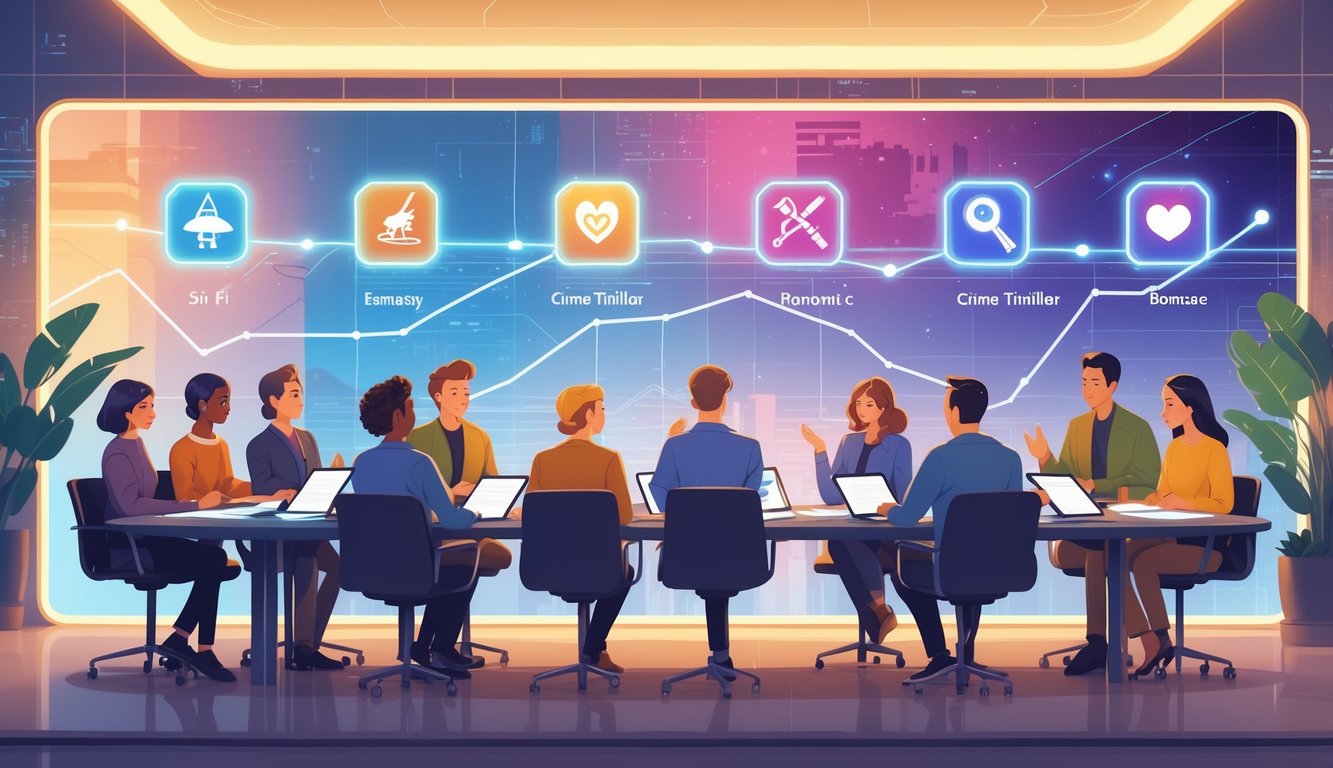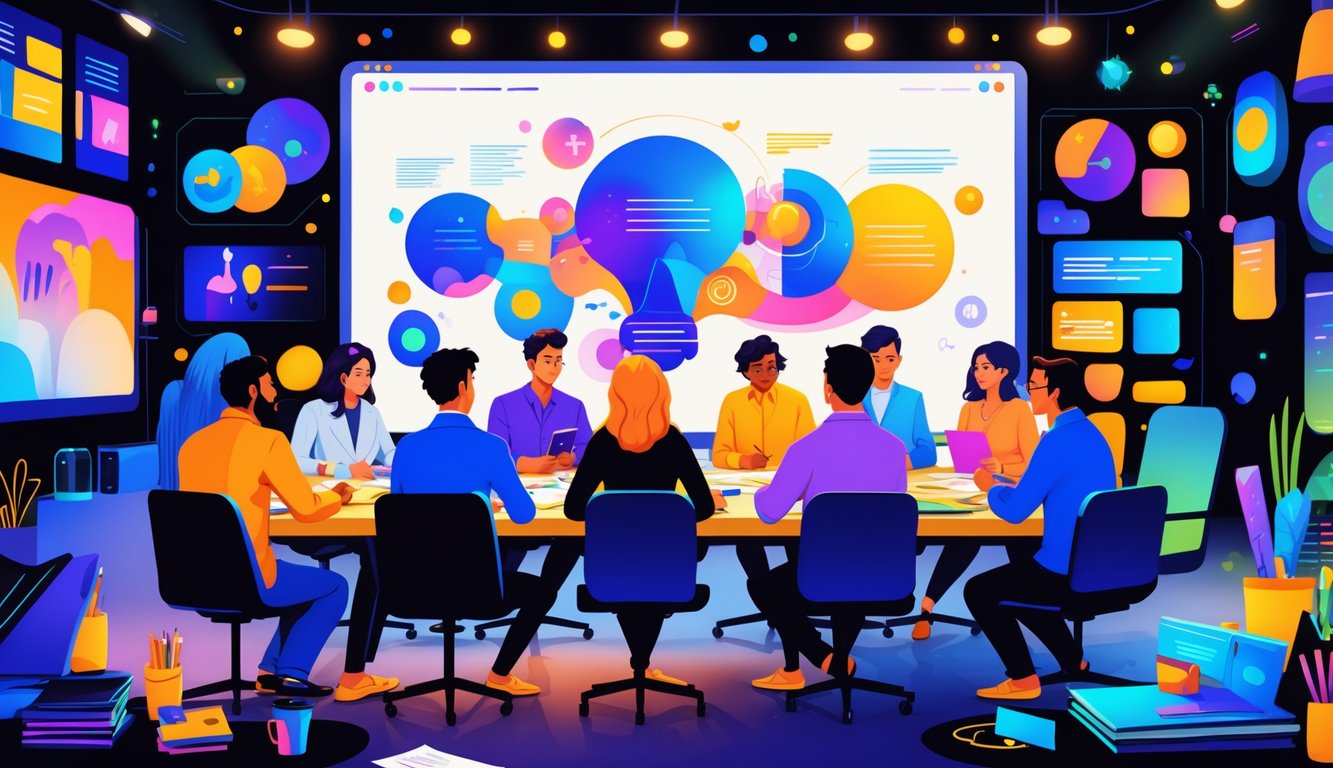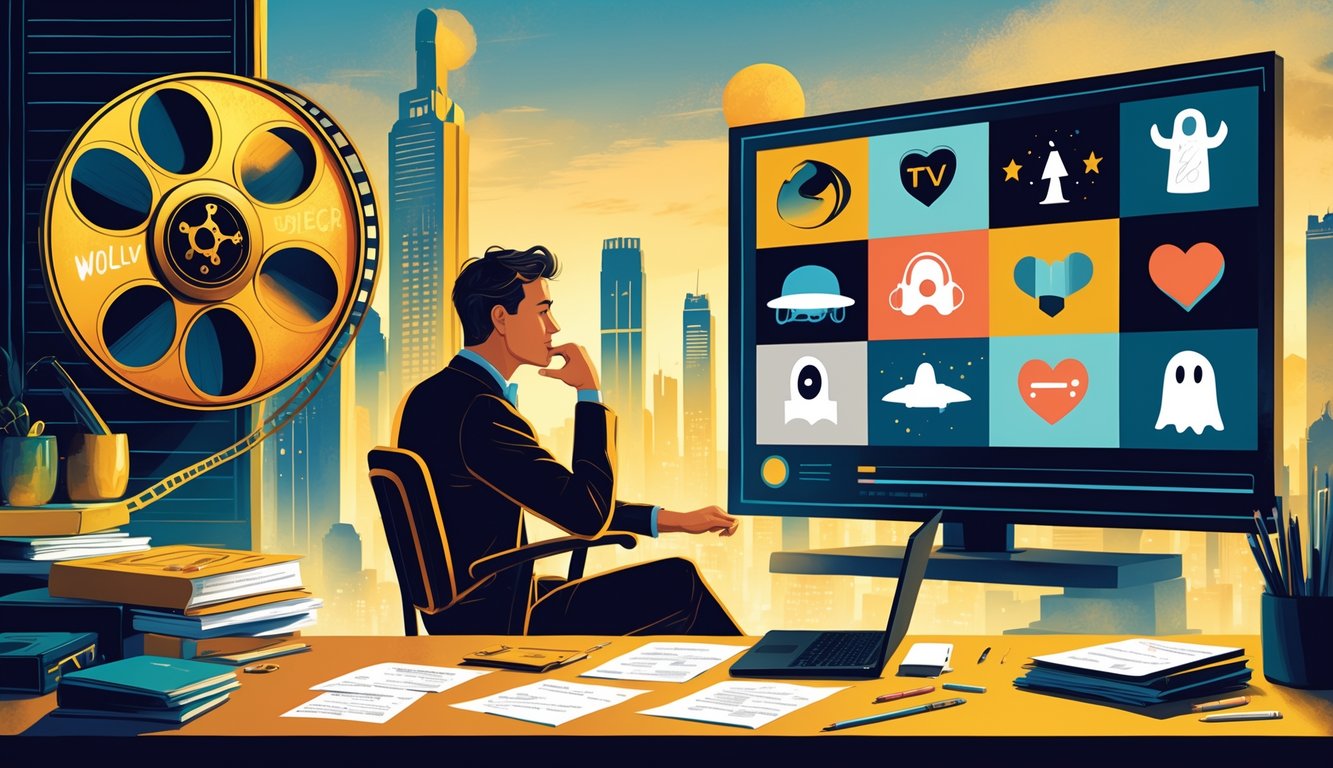
Breaking Away: Alternative and Niche Genres

Genres? Good luck. Labels mean nothing. Writers’ rooms mash up rom-coms with thrillers, cooking shows with fake Italian grandmas (in Toronto, obviously), and everyone’s got an uncle who claims to know the “real” recipe. Hardcore fans rage, streaming numbers spike, and the execs act like there’s a master plan. There isn’t.
Rise of Comedies and Thrillers
Execs want “edgy”—but not, like, Mad Men slow-burn, more like “will this go viral if a cat screams during a murder?” I got pitched a “half-hour apocalypse comedy” last week. Maybe genius, maybe a staffing nightmare. Comedies bounce from surreal to “my therapist said I should write this.” Netflix’s data nerds count laughs per page (is that even real?), and writers argue about joke quotas like it’s the SATs.
Thrillers? Anything’s a thriller now. Someone’s always pitching “relatable neurotic in knockoff Stan Smiths.” I’ve stopped trusting my notes app; plot twists sound smart at 2 a.m., but in daylight? Nope. Niche genres breed wild little fan groups hunting for these weird hybrids. Some folks binge workplace thrillers just to spot ADR mistakes. Is true dark comedy even allowed on primetime? Depends who you ask, and everyone’s wrong.
Crime, Romance, and Genre Hybrids
Writers are obsessed with DNA swabs. Not even kidding—actual props, actual emails. Every crime pitch now swears it’s “forensically accurate,” but backup never shows up on time, so, sure. Romance? It’s everywhere and nowhere. The “boy meets girl” stuff is just bait for hate-watchers. Hybrids—crime with romance, “polyamorous detectives,” or some crypto-heist love triangle—feel like a chemistry experiment gone sideways.
Market research claims “romance elements” boost engagement, but half the viewers can’t even say what genre they just watched. Fiction’s emerging genres are just as wild—gaslamp fantasy, procedural rom-coms, whatever that means. Insiders love to say “genre-bending is the new serialization,” but nobody agrees if that’s good or just annoying. Want pure genre? Good luck fighting the algorithm.
Cooking, Reality TV, and Documentaries
Producers swear their shows are “authentic”—as if handmade pasta in a studio with a $600 gadget and ten interns counts. I’ve watched “unscripted” scenes reshot six times for the sponsor. The influencer host can’t pronounce ‘gnocchi.’ Cooking shows only blow up when something goes wrong—like when someone swaps salt for sugar and the judges pretend not to notice. Judges rave about EVOO, but half the viewers are googling it. I once pitched a cooking-true-crime mashup (“Kitchen Confidential, but forensic”). Execs: “Is bread proofing dramatic enough?” Who knows.
Reality TV is just genre soup. Someone pitches “Love at First Slice” (dating plus pizza), and by the finale, it’s half docuseries, half elimination. Documentaries win awards but, let’s be real, it’s the confessionals and accidental meltdowns that get clipped for TikTok. TV’s full of niche genres and weird hybrids, but in the end? If the grandma’s Sudachi Cake flopped—even after five reshoots—viewers still buy it. None of it makes sense, but the numbers say “keep rolling.”
The Hollywood Influence on TV Genres

Let’s be real: every time a “new” genre trend pops up, Hollywood fingerprints are all over it. Nobody admits it. “Originality” is just some other studio’s leftovers, maybe with a new haircut or a different filter. Execs want “gritty but family-friendly” (what does that even mean?), and the set designer’s got twenty minutes to turn a diner into a spaceship. It’s all nonsense.
Hollywood’s Genre Playbook
Think someone’s got a fresh angle? Nope. It’s the same genre formula, just with glossier titles and maybe a lead who shops at thrift stores. Networks roll out “sci-fi thrillers,” but everyone’s still following the same genre cheat sheet from the ’90s. I sat through a meeting where a showrunner handed out a literal checklist: archetypes, plot twists, and “no ambiguous endings” for primetime. So, uh, how’s anyone supposed to sell “fresh” if everything’s just clickbait with a new coat of paint? Execs want “what’s working”—but also a twist nobody expects, and then every writers’ room spends five minutes before the pitch trying to redefine “unexpected.” It’s exhausting.
Entertainment Industry Power Dynamics
The real mess? Power games. No one warns you, but the money people will kill your weirdest idea for “brand safety.” It’s all about IP and bottom lines. One day you’re writing interstellar romance, next day it’s a corporate heist with branded watches and, who knows, a sourdough subplot. International influence creeps in too—Hollywood’s so dominant that actors in Paris and Shanghai get their lines rewritten by American agents. It’s a weird loop. Heart of Hollywood Magazine says “global trend” just means whatever the LA marketing team pushed this quarter. Sometimes a director sneaks in a weird robot story, but marketing slaps a superhero sideplot on top because “data says it works.” If you’re still here, congrats, you now know why TV genres feel like they’re mutating but never moving forward—unless calling last year’s costume “futuristic” counts.
Viewer Engagement: How Audience Feedback Is Shaping Genres
Every time I see a poll on X (Twitter, whatever), I think, “Wow, we really let this genie out.” Immediate feedback, instant chaos. Writers never planned for this—now, genres, characters, even side plots can flip because a bunch of people trended a hashtag. It’s wild. Not even wild in a fun way.
Interactive Content and Social Media
Yesterday, some platform (doesn’t matter which) wanted real-time viewer surveys in the stream. Like, actual live metrics. You hover over an episode, suddenly there’s a poll. Network execs wave around “viewer retention” stats, bragging about engagement spikes when they wedge polls into the UI.
Writers curse the feedback loops. Showrunners secretly love them—hashtags, live reactions, dashboards with more charts than a NASA launch. It’s not about the story anymore—it’s about numbers and moods, and a character’s fate can swing in minutes. Anyone clinging to the old way hasn’t had to rewrite a finale mid-broadcast because a character trended for, I don’t know, eating a sandwich wrong. TV is now a chatroom, a suggestion box, a panic attack. Want more? There’s a rabbit hole at The Future of Viewer Engagement: Interactive TV News Formats.
Emergence of New Audience-Driven Genres
And here’s where it gets weirder: genres spawn sub-genres overnight because platforms track which thumbnail you click, not what you finish. AI predicts “sticky” plot points, but the actual genres? Blurred beyond recognition. You get mashups—true-crime romance, interactive whodunits—born from data, not tradition. Sometimes writers barely invent a genre before viewers mutate it through live voting.
I remember this one show—execs demanded a genre change mid-season because analytics showed viewers bailed after three suspenseful minutes. Next thing you know, “comedy-thriller-doc” is greenlit. ‘Audience-driven genre’ isn’t a buzzword—it’s just what happens now. Platforms use big data and AI to spit out subgenres that would’ve been a typo five years ago. Curious? The numbers game is at Understanding the Impact of Numbers on TV Ratings and Viewer Engagement.



